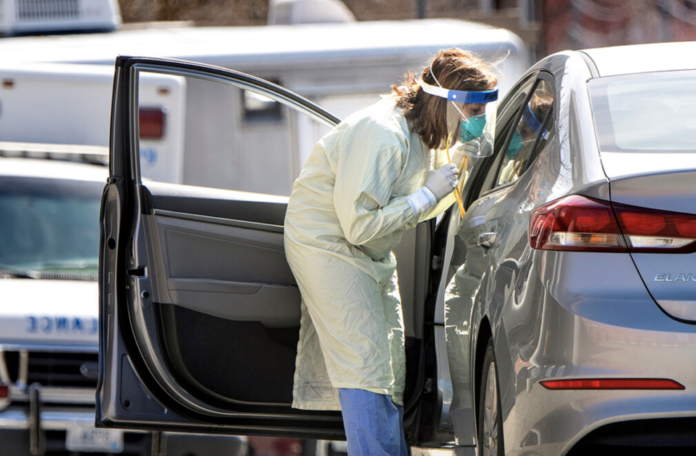
PROVIDENCE – Rhode Island’s daily percentage of positive coronavirus tests have varied widely for weeks, depending on who is tracking the data and how it is calculated. While the R.I. Department of Health was reporting positive rates of around 2%, independent tracking websites that have been used by states to determine travel advisories were reporting rates that were higher than 5%.
After communications among the R.I. Department of Health, The COVID Tracking Project by The Atlantic and the Johns Hopkins University’s COVID-19 Testing Insights Initiative, those sites are now aligning posted positive rates with the RIDOH data.
“Overall, it’s very good news that our data is being held against the data in other states in a more standard way,” said RIDOH spokesperson Joseph Wendelken.
And, Rhode Island wasn’t the only state seeing a difference in the positive testing rates it reported and the rates posting by the tracking sites. Rhode Island, Colorado and Virginia were releasing the number of tests that were conducted in a single day and the number of unique people that were tested for the virus.
For example, on Aug. 13, RIDOH’s reported that the state’s positive rate was 2.3%. But when excluding both repeat negative and repeat positive results, the positive rate for the day was 4.5%. That’s the number The Atlantic’s project and the Johns Hopkins study reported.
RIDOH Director Dr. Nicole Alexander-Scott had asked in a letter to the COVID-Tracking Project that the site report uniform data for each state.
“[Rhode Island officials] support that the measure be number of tests rather than people,” she wrote.
Over the last two weeks, Wendelken said it has been an “on-going dialogue” between the state at the COVID Tracking Project, while the website made adjustments based on feedback from RIDOH and other states.
Wendelken said RIDOH is continuing to use the Johns Hopkins study to determine which states will be added to Rhode Island’s travel advisory.
According to Alexis Madrigal, a co-developer and co-founder of the project and journalist for The Atlantic, said that it would be better if all 50 states reported the same metrics, including both unique people getting tested and unique swabs. But without a national testing strategy, it’s up to states’ health departments to figure out what’s best for their state, and if they have the bandwidth for it, she said.
“There’s no right way,” Madrigal told Providence Business News. “And it’s made this quite complicated.”
For ensuring that the data was comparable, and to best estimate the testing capacity of both a state and nation, testing encounters are the best figure, followed by specimens and then unique people, according to Madrigal.
He said there’s a lack of federal guidelines on how states should be reporting COVID-19 cases and tests, and it’s like “working backwards” to decipher the data.
“For us, more metrics is better,” said Madrigal. “But states have to report what is easiest for their software. But I lay it on the federal government. This is not a problem we should have had.”
Alexa Gagosz is a PBN staff writer. Contact her at Gagosz@PBN.com.











